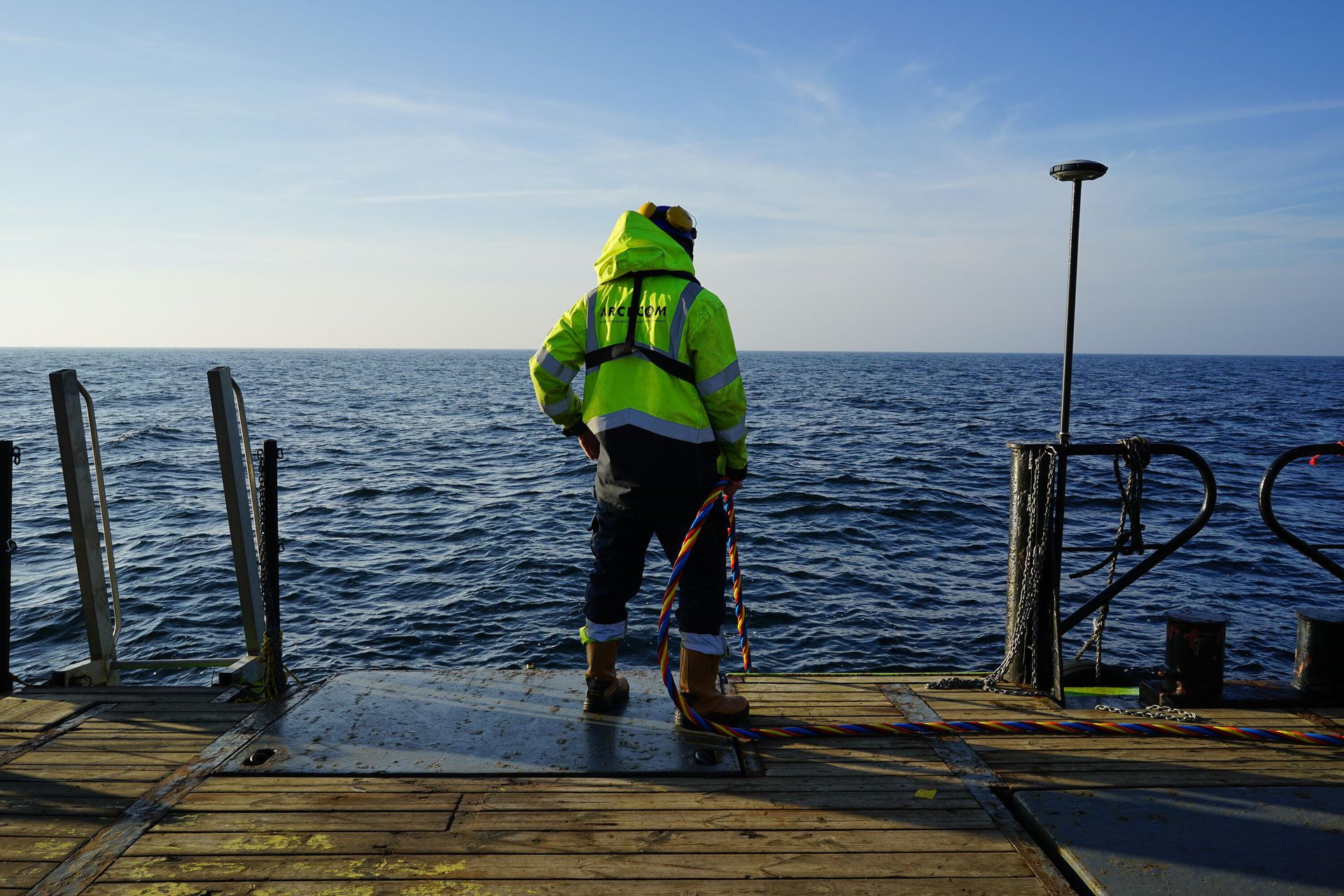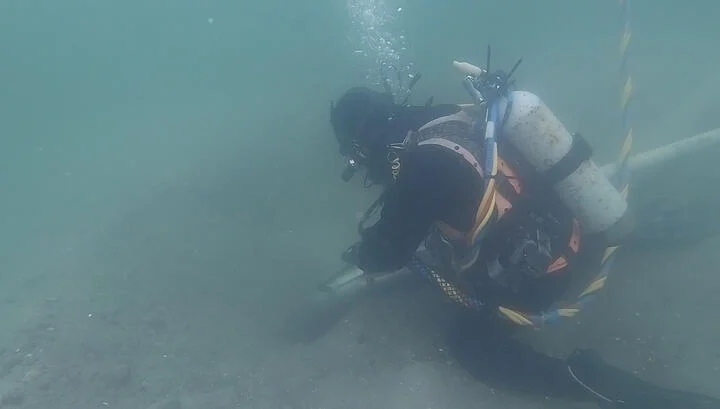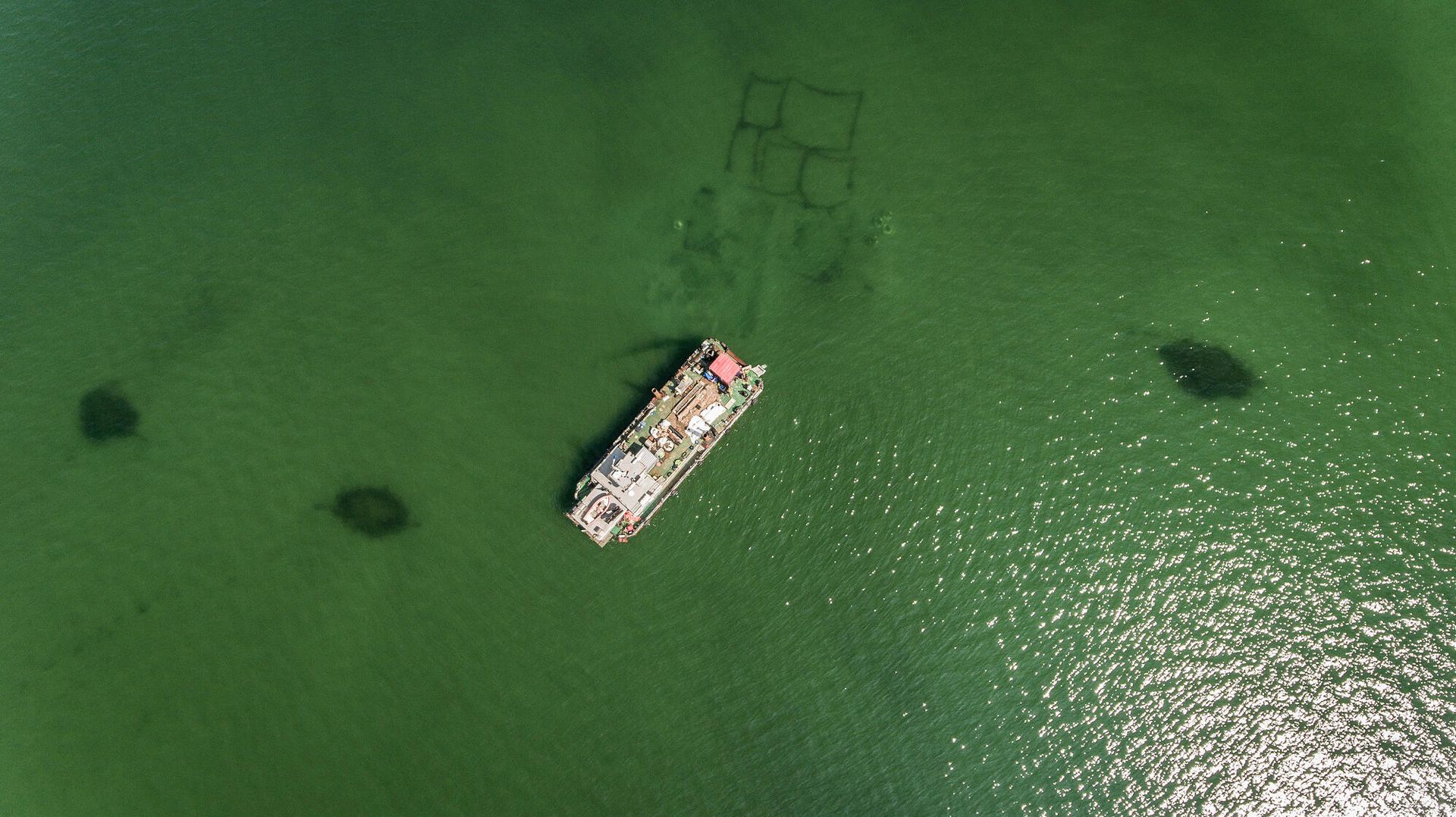Discovering our affordable, lightweight, and compatible high-tech equipment for accurate positioning, encouraged Bartek and Paweł to pursue making a living out of their passion for underwater archaeology.
The challenge
“There is no way we can become a viable company by only offering archaeological diving services”. This is what ArchCom Services in Gdynia, Poland, thought to themselves when they first decided to launch their company.
Supplementing their passion for archaeology with commercial diving seemed like the strategically right decision in the early days of the company. One of the main challenges was making the business case to purchase additional equipment add up. This is something Bartek and Paweł, the founders of ArchCom, got to experience when they were acquiring their first underwater tracking and navigation system.
Marine technology-based products use state-of-the-art materials and, of course, typically a price tag to go with such advanced equipment. The typical non-commercial applications for these kinds of products have historically been as part of bigger, government or university backed projects. Projects with vast scientific or monetary value, where investing in high tech and high value products has been considered a given. This is great for high margin investments; not so great for specialized, streamlined projects such as those ArchCom typically manage.
Hence, the feeling of relief and joy was big when Bartek and Paweł discovered a) our products, b) the price tag of our products and last, but not least, c) the performance and capability of our products. Finding Water Linked couldn’t have come at a better time during their search for ways to upgrade their approach to subsea operations.

The requirements
Being a company whose bread and butter is providing diving services, Paweł and Bartek had a clear list of requirements for the technology they needed:
- Budget levels were proportional to the company’s young age and, at that time, uncertain customer prospects in the field of underwater archaeology. Hence, the underwater tracking system had to be reasonably priced.
- Accuracy and performance is a crucial element when tracking human divers. More so when the divers are carrying out archaeological research on invaluable objects on the seabed.
- Portability was an important aspect. Since projects were carried out from a variety of vessels, small and large, the system had to be fully portable.
- The product had to be user friendly. ArchCom wanted the ability to integrate, maintain and operate their own equipment without the need of third parties.
- Physical compatibility with the diver equipment; ensuring that the size of the locator component would not impair the diver’s maneuverability was crucial.
- Technical compatibility in terms of API compatibility was a must-have. All positioning data had to be transferable to ArchCom’s third party map solution: QGIS.
The solution
Having weighed up all the possible solution providers against their list of requirements, the choice of underwater positioning system landed on the Water Linked Underwater GPS (UGPS) Explorer Kit, superseded now by the UGPS G2 system. The system’s reasonable price, tailorable and portable nature as well as performance capability made it the best choice. To provide ArchCom with accurate positioning data, the D1 Locator was chosen due to its flexible mounting capabilities. And most importantly, it all had to fit in with the technical and mechanical setup of their operations:
When out on projects, ArchCom’s diving crew consists of at least four people, excluding the vessel crew. The diver supervisor, who is responsible for tracking, depth as well as air and communication; everything to do with the diver’s health and safety alongside the tracking and logging of the research. Secondly you have the tender, whose job is to help the supervisor and monitor the umbilical tether. Then there are two divers., First and foremost the main diver, whose job is to carry out the task underwater - whether it is identifying, and documenting finds, extracting objects, replacing objects or anything in between. As a default safety measure there is also a backup diver. This diver is always standing by, ready to dive in to provide support to the main diver. The elaborate team structure is just one of the many things that separate ArchCom, a certified commercial diving company, from sports divers; their safety and quality processes.

The convenient size of the D1 locator allows for it to be mounted on the top of the diver’s back. This keeps the locator always centred on the diver’s body, making the positioning data as accurate as possible.
To supply the diver with light, breathing gas, a live camera connection as well as direct communication, ArchCom use an umbilical tether. This makes for a convenient integration of the signal and power cable for the Water Linked D1 locator. In ArchCom’s case, the cables for the D1 locator are the same length as the umbilical cord, meaning they have accurate tracking for as deep as the diver can go.
For triangulation, a 4-point custom baseline setup is used. “The custom baseline setup allows you to create a custom triangulation baseline, however, we might acquire an antenna setup, too. Its portability and easy calibration could come in handy” Paweł said when asked whether they have considered adding the antenna to their setup.
The result
Adding advanced underwater positioning to their tech stack was a necessity for ArchCom to deliver their services:
“Being able to provide highly accurate positioning data from our research is crucial” Bartek replies when asked about the value of the increased availability of underwater technology
Historical accuracy or accurate history?
Since acquiring the system upon its release, the system has proven useful in a range of projects.
Not long ago, ArchCom were hired to support with a watching brief in relation to a commercial pipe laying project where their main task was to make sure cultural heritage was not affected throughout the construction process. It was during this project they identified a an anomality on the seabed. The anomality, proving to be a large collection of timber from two shipwrecks, could not be avoided; the path of the pipe could not be diverted. Thus, ArchCom’s watching brief had turned into an active task: they had to temporarily remove the remainders of these shipwrecks from the seabed, supervise the installation of the pipes, and then dispose of the timber in predefined underwater trenches. Time was of course of the essence - the overhanging piping project was on a tight deadline.
Working with a team of highly experienced professionals, ArchCom found a solution on how to get it done. -A solution where the Water Linked Underwater GPS Explorer Kit was invaluable.

Before starting any kind of object extraction, mapping the location of every single object was required. The position mapping was done with a combination of the Explorer Kit as well as traditional GPS receivers mounted on poles above water.
Using a special kind of rope, the shipwreck’s position was recreated visually as seen in the drone photo. What cannot be seen in the photo are all the positioning points which provide precise GPS instructions as to where each recovered object should be replaced at the end of the project.
For these kinds of projects where the main goal is to observe and identify anomalies on the seabed, the Water Linked UGPS system has proven invaluable to ArchCom. Using the Water Linked positioning system, they can guide the diver directly to the pre-mapped locations without time consuming searches. This also works the other way around; when the diver is searching for anomalies and structures whose location is unknown. In these situations, the dive supervisor can not only mark the position of new discoveries, but also track previous diver movement to exclude areas that have already been searched.
Creating photogrammetric, underwater hybrid maps
Another core service ArchCom offer is creating hybrid maps using underwater photogrammetry and advanced mapping technology. The Explorer Kit helps enable accurate mapping and tracking according to the photogrammetry models.
Paweł expresses his fondness for the API integration the UGPS offers, saying “Although we did not handle the API integration ourselves, its tailorability was one of the reasons we chose Water Linked.”. ArchCom don’t actually use the provided WL UGPS Graphical User Interface (GUI), but rather they map all the positioning data into their third party mapping solution, QGIS. “Integrating the UGPS with QGIS allows us to dynamically transfer the mapping data onto the photogrammetry models. This way we can also much more accurately navigate the diver around these fragile pieces of history, from above the surface”.
“We will always be archaeologists first…”
When asked whether the filled-up agenda, stretching far ahead in time, meant they will solely focus on archaeological diving, the response is mutual from both:
“We will always be archaeologists firsts, so obviously archaeological projects will be most attractive to us. But for now, we also consider projects that are not strictly archaeological!” Paweł says with a smile on his face.
With the help of affordable, innovative, and advanced underwater technology, ArchCom can keep honing their product offering within the archaeological sphere allowing them to use advanced technology in this area thanks to the needs of the commercial projects.
We at Water Linked are extremely pleased to see how ArchCom have managed to tailor our equipment to fit their needs exactly and look forward to following their journey ahead! And who knows, maybe we have some soon-to-come product launches that would make another great addition in the field of underwater archaeology?
You can read more about ArchCom and their projects on their website. Remember to follow their Instagram and Facebook profiles to stay up to date on their newest projects and finds.
